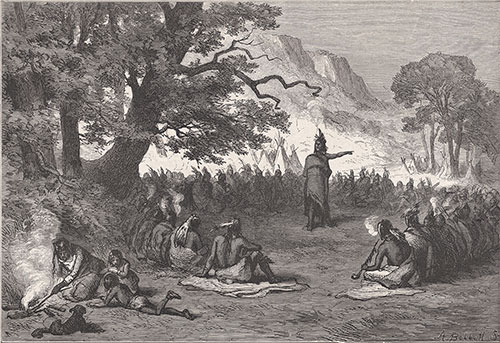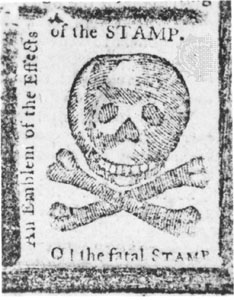Learn
Effects of the French and Indian War
Review of the French and Indian War
- The war in Europe was called the Seven Years' War.
- The British and the French fought each other, and Native American groups fought on both sides.
- Why? Land and rivalries.
- The British won the war.
- The Treaty of Paris (1763) negotiated peace at the end of the war.

Colonist Loyalty to Britain Weakens
Despite their victory in the French and Indian War, the British felt the colonists did not provide enough support for the long costly war. On the other hand, the American colonists were shocked by the weakness of British military tactics and wanted to be led by colonial officers.
The war changed the colonists' feelings about the British in the following ways:
- Colonists lost respect for British military power.
- Colonists believed the British did not share the same values as Americans or treat them with appropriate respect.

Tensions after the French and Indian War
During and after the war, tension developed between the British and their American colonists. Below are 5 opposing views on key issues:
| Issues | British Views | Colonial Views |
|---|---|---|
| Colonial Defense | Wanted colonists to help defend their land | Wanted the colonial militias to defend home territory |
| Colonial Assemblies | Thought colonists were abusing their power | Accustomed to ruling themselves |
| Smuggling | Thought it illegal and believed it prolonged the war | Wanted to continue it because it was profitable |
| Taxes | Needed colonial money to help pay off war debt from "their" war |
Disliked paying taxes that had been around for a while but were only now being enforced |
| British troops in America | Needed troops to guard new territory and control the colonists | Believed the troops threatened liberty and representative government |
Pontiac's Rebellion of 1763
After the French and Indian War, the British gained vast amounts of territory which thrilled the colonists. However, these were Native American lands. When colonists moved into the newly acquired territory where Native Americans had lived for thousands of years, the Native Americans rebelled.
During Pontiac's Rebellion, several tribes in the Great Lakes region, led by the Ottawa Chief Pontiac, attacked and destroyed numerous British posts, killing approximately 2,000 colonists.
The colonists expected British protection. Instead, the stubborn new king of England, King George III, tried to restore peace by issuing the Proclamation of 1763.

Proclamation of 1763
The Proclamation of 1763 prohibited colonial settlement onto the newly acquired land east of the Mississippi River and west of the Appalachian Mountains. The British temporarily limited colonial access to the new lands in order to avoid problems with the Native Americans.
The colonists were infuriated and decided to move into the territory anyway. The events surrounding the Proclamation of 1763 created yet another division between Britain and its American colonies.

"The Proclamation Line of 1763." Discovery Education, IRC, 2005, app.discoveryeducation.com/learn/player/788f3f09-44cb-4017-b664-9ba377f3d6db.
British Financial Problems
While Britain hoped to prevent potential conflict with the Native Americans, they also wanted to tighten their control over the colonies and increase their tax revenue. The costs of governing and defending Britain's vast empire skyrocketed during the French and Indian War, making the British among the most heavily taxed people in the world.
Britain struggled with heavy debts and taxes, while their colonies in America prospered.
The British plans to remedy their financial problems included:
- Enforce the Navigation Acts, which placed duties (or taxes) on imports and restricted trade.
- Tax the American colonies to pay off war debts.
The acts had been around for years but were never strictly enforced due to salutary neglect A policy of neglecting the colonies.

Taxation Without Representation
The British government continued their effort to tighten control over the American colonies. Their next move was to impose a variety of taxes on the colonies. British Prime Minister George Grenville issued many new rules and taxes designed to raise more income from the colonies. The rules included using the Navy to crack down on smuggling illegally importing.

Sugar Act of 1764
The Sugar Act of 1764 was designed to raise money, stop smuggling, and tighten control over the colonies. It cut taxes on foreign molasses and sugar in half to encourage colonists to buy imported molasses and sugar rather than risk smuggling. It also restricted coastal shipping. Violators of the act could be tried without a jury.
The Quartering Act
Passed in 1765, the Quartering Act required colonists to provide housing and supplies for British troops who remained in America after the French and Indian War. Both the Sugar Act and Quartering Act alarmed colonists!
The Stamp Act
In addition to the Sugar Act and the Quartering Act, the British passed the Stamp Act in March of 1765 to raise money to support British officials and troops in the colonies. It placed a tax on all legal papers, newspapers, pamphlets, and most printed materials. It also required an official government stamp on printed materials, even playing cards.

The colonists strongly opposed the Stamp Act because it directly affected most of them. However, the biggest issue for the colonists was not what or how much was taxed, but rather, the fact that it was "taxation without representation". In other words, colonists were being taxed as British citizens, but the colonies had no representatives in parliament to give them a voice concerning laws and taxes.

Stamp Act Congress
The continued effort to tax the colonies further escalated the divisions between the British and the colonists in America. Finally, in October of 1765, delegates from seven colonies met in New York to voice opposition to the Stamp Act at what is known as the Stamp Act Congress.
Stamp Act Repealed
Petitions, or letters, were sent to the King and Parliament claiming colonists should have the same rights and liberties as the citizens living in England. The letters also stated Colonists were being "taxed without representation". Eventually, Grenville was forced from power and Parliament repealed canceled or revoked the Stamp Act in March 1766.

Sons of Liberty
Americans did more than protest with just words. Eventually, violence and boycotts Refusal to buy certain products or use certain services ensued to resist the tax.
Sons of Liberty groups sprang up throughout the colonies to enforce the boycotts and to organize other ways to resist British policies.
Led by Samuel Adams, the Boston Sons of Liberty was the most active of these groups. They even resorted to violence against those who distributed stamps. By the time the Stamp Act took effect, most stamp distributors had resigned or fled due to pressure.

Declaratory and Townshend Acts
The repeal of the Stamp Act encouraged the colonists. However, on the same day it was repealed, the Declaratory Act was passed to affirm Parliament's power to make laws that applied to the colonies. The larger issue of "taxation without representation" still remained.
It was not long before Parliament passed another tax to raise money to pay for British troops and salaries for British officials in the colonies. The Townshend Acts of 1767 reasserted Parliament's power by taxing certain imported goods, including glass, lead, and tea.
Colonists were angered once again that Great Britain was taking away colonial control over royal officials' salaries. Boycotts, protests, and violence began again. The Townshend Acts continued "taxation without representation", weakened the colonies' legislatures, and undermined self-government in the colonies.
Additional Resources
Explore the following to learn more about the rising tensions between the British and the colonists in America: